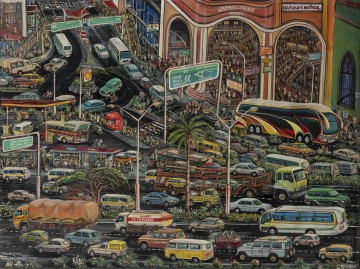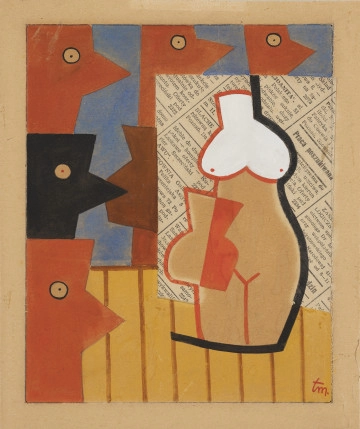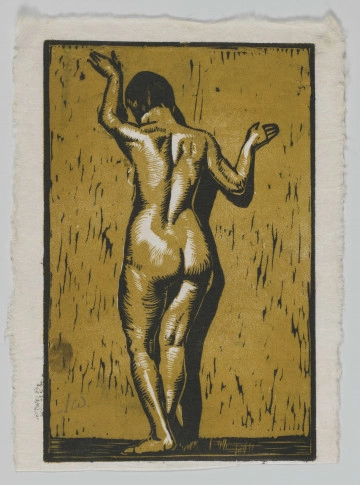
Lamu of the Future
2009 — 2023
National Museum in Szczecin
Part of the collection: European classics of modernity
Hermann Geibel enrolled at the Academy of Fine Arts in Dresden in 1909, but a scholarship from the Munich Academy enabled him to move to the Bavarian capital a year later. There, in an atmosphere of adoration for the paintings of Hans von Marées and the theory of form of Adolf von Hildebrandt, he continued his education under the latter's successor, Erwin Kurz. He soon moved to the open-air atelier of the animalist Heinrich von Zügel, devoting himself mainly to sculpture. At the same time, he took part in the evening drawing course of Gustav Britsch, who used a revolutionary method of developing the eidetic imagination, based on observing moving images and recreating them from memory without additional corrections. In the studio, he focused on nude drawings and studies of the movement of rhythmically exercising models, while in the open air he explored similar problems on the example of animals. The outbreak of war brought six months of conscription into the army, which ended with his convalescence after a severe gunshot wound to the right shoulder. From then on Geibel began to exercise his left hand, drawing, painting and finally modelling in clay. A visit to Karl Albiker's studio caused him to reject Hildebrandt's conception of sculpture as calculated for a distant view of the silhouette, in favour of a three-dimensional, multi-view spatial composition. The full-figure portraits of children in various stages of movement and female nudes appeared to be an echo of his earlier studies. This group includes a terracotta composition entitled Klęcząca [The Kneeling], which was purchased for the collection of the City Museum in Szczecin. As perceived by his director, Walter Riezler, Geibel was one of the disciples of the concept of New Classicism. Riezler, who held a doctorate in Mediterranean archaeology and was active as a Werkbund theoretician, appreciated the ancient context of contemporary art. However, he required it to consider the problems of modernity, such as the issue of dynamics and rhythm. In sculpture, these issues preoccupied many German artists of the interwar period, who followed in the footsteps of Edgar Degas.
Szymon Piotr Kubiak
Author / creator
Dimensions
cały obiekt: height: 26 cm, width: 30 cm
Object type
sculpture
Creation time / dating
Creation / finding place
Identification number
Location / status

Onyango, Richard
2009 — 2023
National Museum in Szczecin

Tomaszewski, Marian
1949
National Museum in Szczecin

Wydra, Jan
National Museum in Lublin
DISCOVER this TOPIC
National Museum in Lublin
DISCOVER this PATH
Educational path
0/500

We use cookies to make it easier for you to use our website and for statistical purposes. You can manage cookies by changing the settings of your web browser. More information in the Privacy Policy.
We use cookies to make it easier for you to use our website and for statistical purposes. You can manage cookies by changing the settings of your web browser. More information in the Privacy Policy.
Manage cookies:
This type of cookies is necessary for the website to function. You can change your browser settings to block them, but then the website will not work properly.
WYMAGANE
They are used to measure user engagement and generate statistics about the website to better understand how it is used. If you block this type of cookies, we will not be able to collect information about the use of the website and we will not be able to monitor its performance.